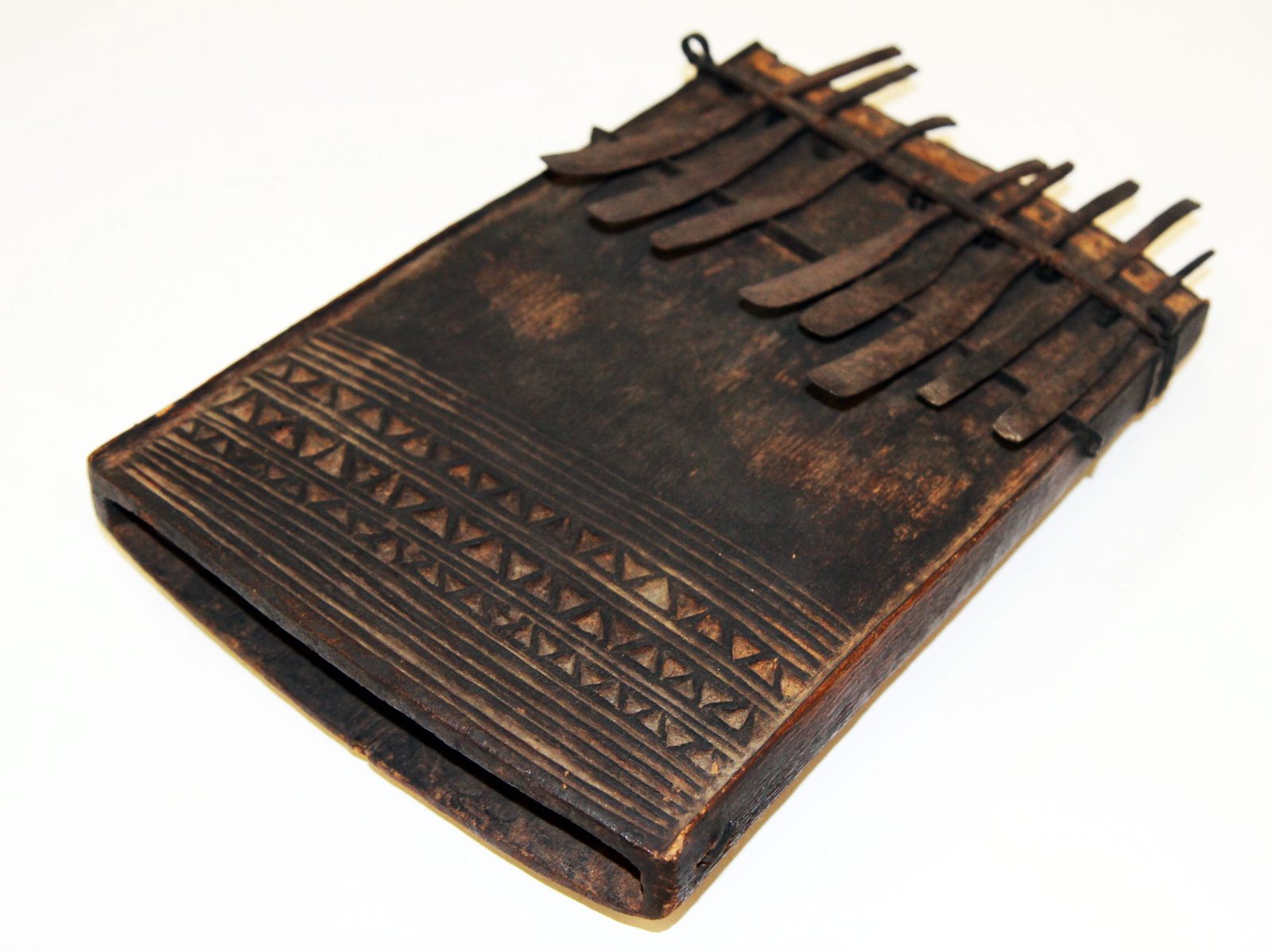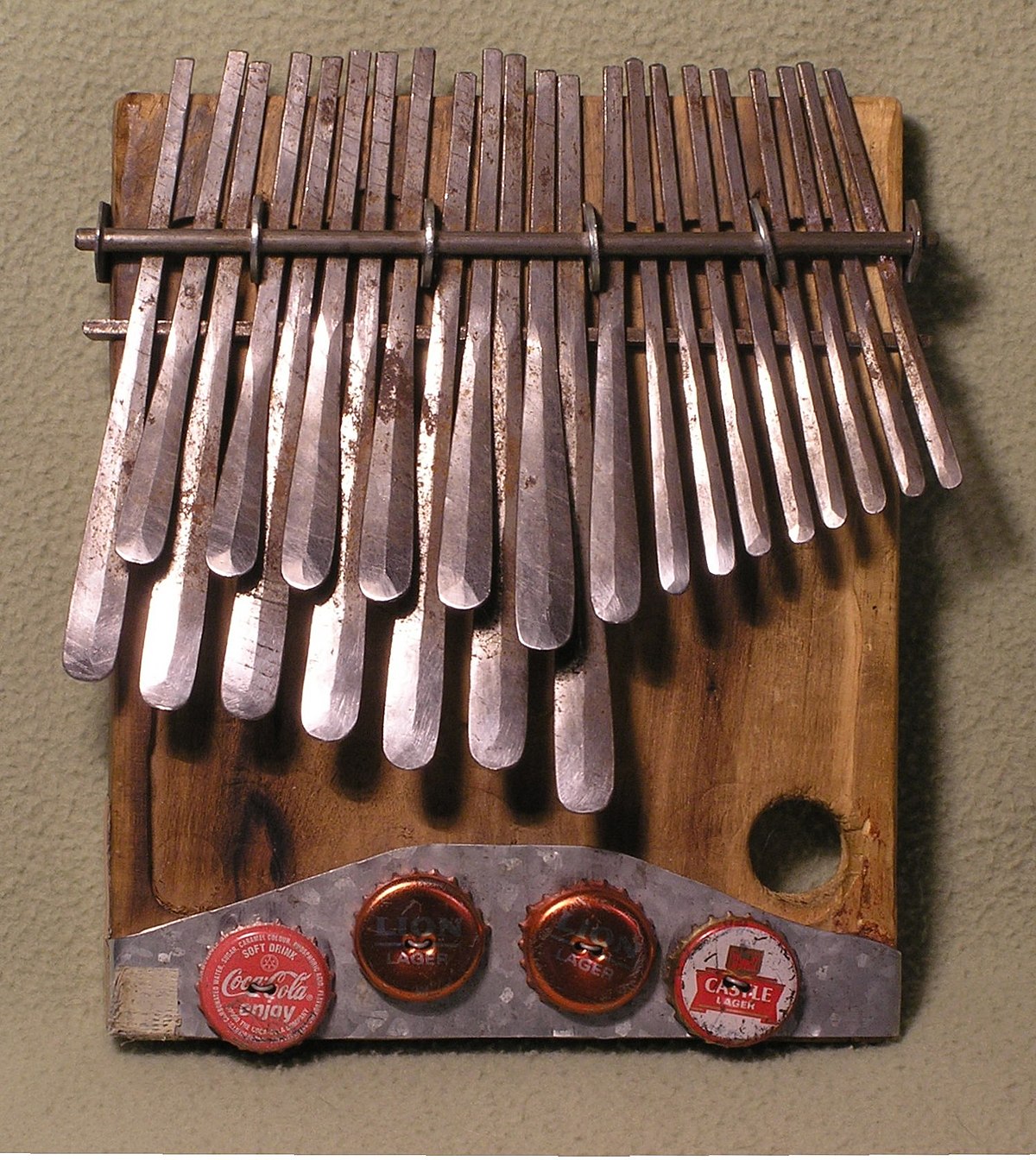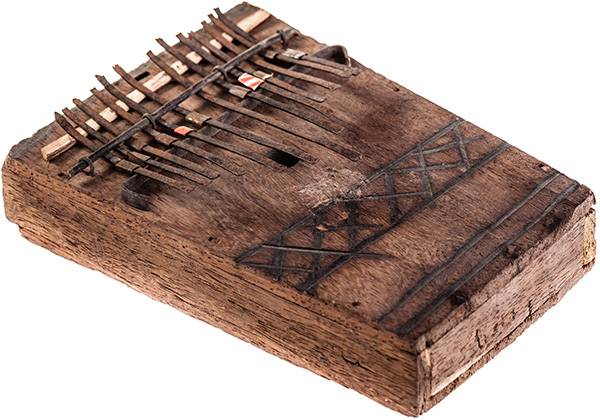Mbira / Kalimba
Melodic Percussions
Africa
Between 1001 and 1900 AD
Video
The mbira, often modernized as the kalimba, is a traditional African musical instrument with deep historical, cultural, and musical significance. Its long evolution from ancient craftsmanship to modern adaptation highlights its versatility and enduring appeal.
Origins
The mbira is believed to have originated approximately 3,000 years ago in West Africa, particularly in regions near present-day Cameroon. Early versions of the instrument were constructed using natural materials like bamboo and palm leaves, reflecting the resourcefulness of its creators. Around 1,300 years ago, during the Iron Age, the introduction of metal tines—thin, tuned strips of metal—marked a significant development in the instrument’s design. This innovation is particularly associated with the Zambezi Valley in southeastern Africa, where metal-tined mbiras became central to the musical traditions of the Shona people of Zimbabwe. The mbira has since played a critical role in social gatherings, religious ceremonies, and storytelling, with performers often using it to communicate with ancestors and convey cultural narratives.
Evolution
Hugh Tracey and the Kalimba
In the mid-20th century, the mbira gained global recognition largely through the efforts of Hugh Tracey, a British ethnomusicologist. Fascinated by African music, Tracey sought to introduce the mbira to Western audiences. He developed a Westernized version of the mbira, which he named the kalimba, in the 1950s. While retaining the mbira’s essential structure, the kalimba was simplified for accessibility, portability, and mass production, allowing it to be enjoyed by musicians unfamiliar with traditional African music.
Modern Adaptations
Today, the mbira and kalimba are available in diverse forms and sizes, ranging from simple models with just a few metal tines to elaborate designs featuring over 20 tines. These modern adaptations often emphasize portability and ease of use while preserving the instrument’s characteristic sound. The kalimba’s soothing, melodic tones have made it popular in music therapy, meditation, and world music genres. Its versatility has also inspired innovations, such as the addition of amplification systems for use in contemporary performances.
Cultural Significance
Recognition and Heritage
In 2020, the traditional art of playing the mbira was recognized by UNESCO as part of the intangible cultural heritage of humanity, underscoring its importance as both a musical instrument and a cultural artifact. This designation highlights the mbira’s role in preserving the history, spirituality, and artistic traditions of African societies.
Global Influence
The mbira’s influence extends far beyond its African roots. The kalimba has gained popularity in various musical contexts worldwide, appearing in the works of renowned artists such as Earth, Wind & Fire and Imogen Heap. Its gentle, resonant tones make it an ideal instrument for diverse applications, from casual performances to therapeutic settings. Its adaptability and universal appeal have allowed it to transcend cultural boundaries, becoming a beloved instrument in many parts of the world.
Conclusion
The mbira/kalimba is much more than a musical instrument; it is a symbol of cultural identity, resilience, and creativity. From its ancient origins in African communities to its modern adaptations and global acclaim, the mbira has remained a vital part of human expression. Its evolution demonstrates the instrument’s capacity to bridge cultures and eras, offering both a connection to its rich heritage and a platform for innovation in contemporary music.
FAQ
What is the Mbira/Kalimba made of?
It is traditionally made of a wooden soundboard, often crafted from hardwood or softwood. Attached to the soundboard are metal tines or keys, usually made of steel, which are plucked to produce sound. Some mbiras also have a resonator, such as a gourd or hollow box, to amplify the instrument’s tone.
What is the Mbira/Kalimba used for?
The mbira or kalimba is used as a melodic and rhythmic instrument in various musical traditions, particularly in African cultures. It is often played for storytelling, spiritual ceremonies, and social gatherings. With its soothing tones, the mbira is also used in modern music for meditation, relaxation, and creating unique soundscapes.
How is mbira played?
The mbira, also known as the thumb piano, is played by plucking its metal tines with the thumbs and sometimes the forefinger. The instrument is often held with both hands, and the player alternates between the left and right tines to create melodic and rhythmic patterns. It is typically played inside a resonator, such as a hollowed gourd, to amplify its warm, bell-like tones. Often used in traditional African music, the mbira creates a meditative and polyrhythmic sound.
Other Instrument
Categories





















